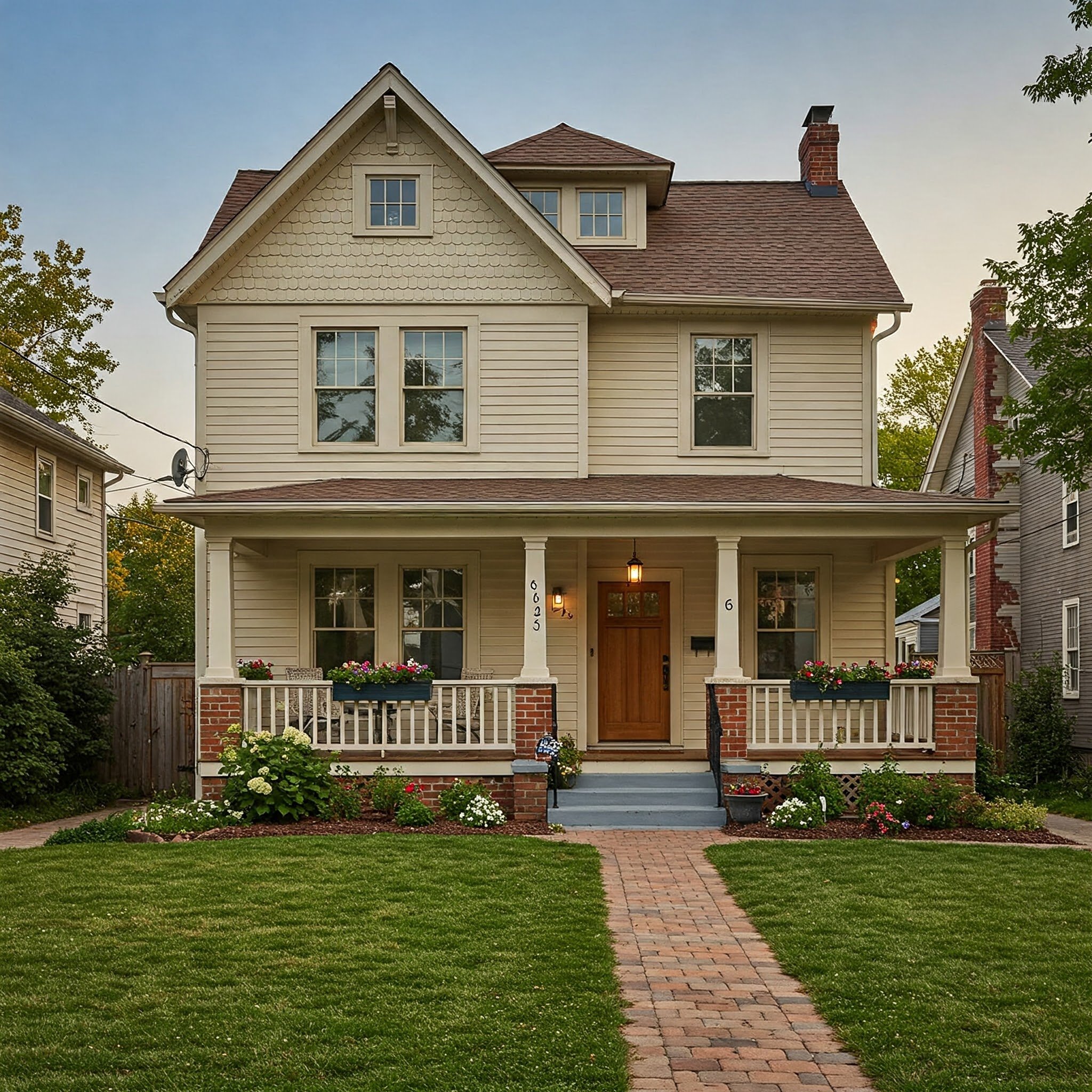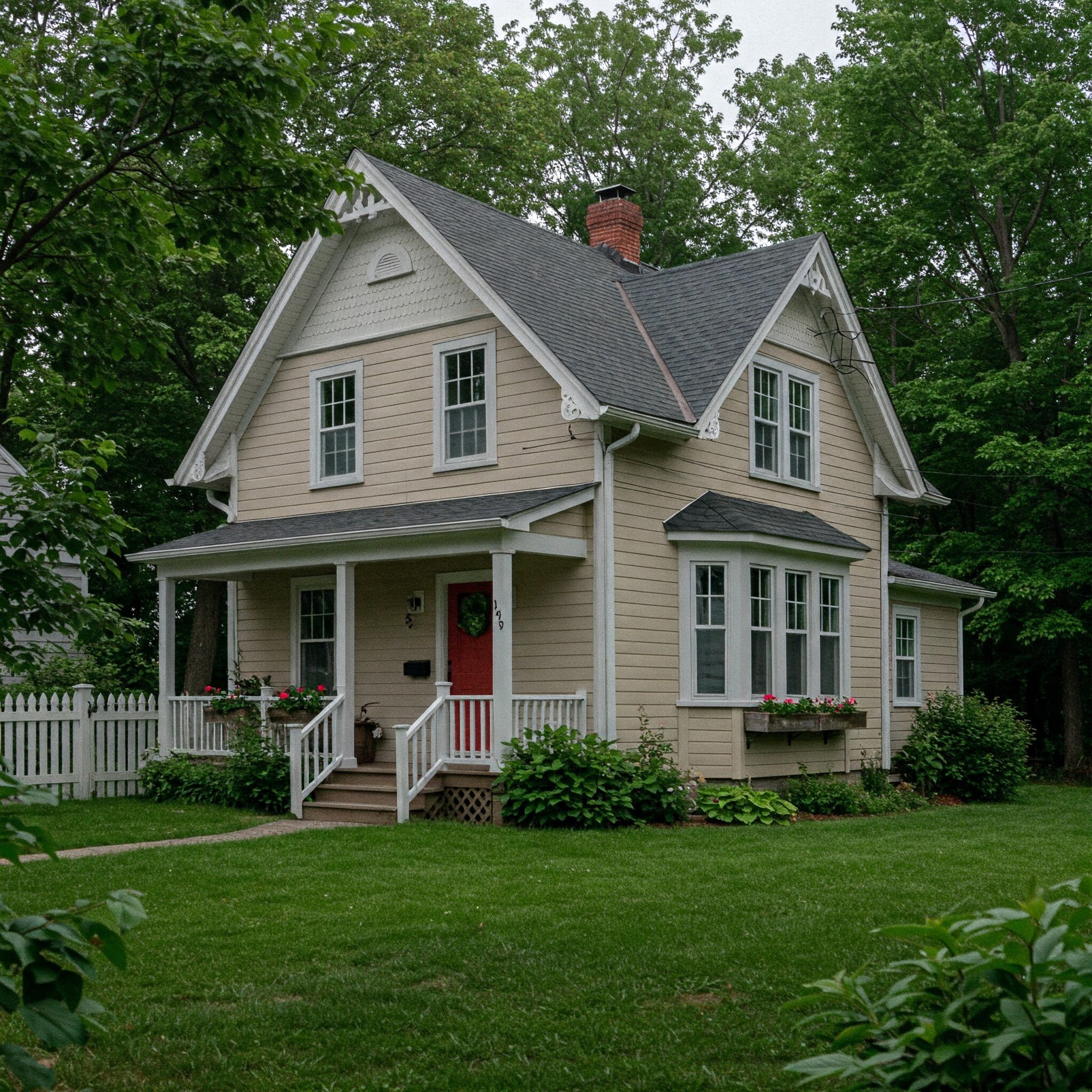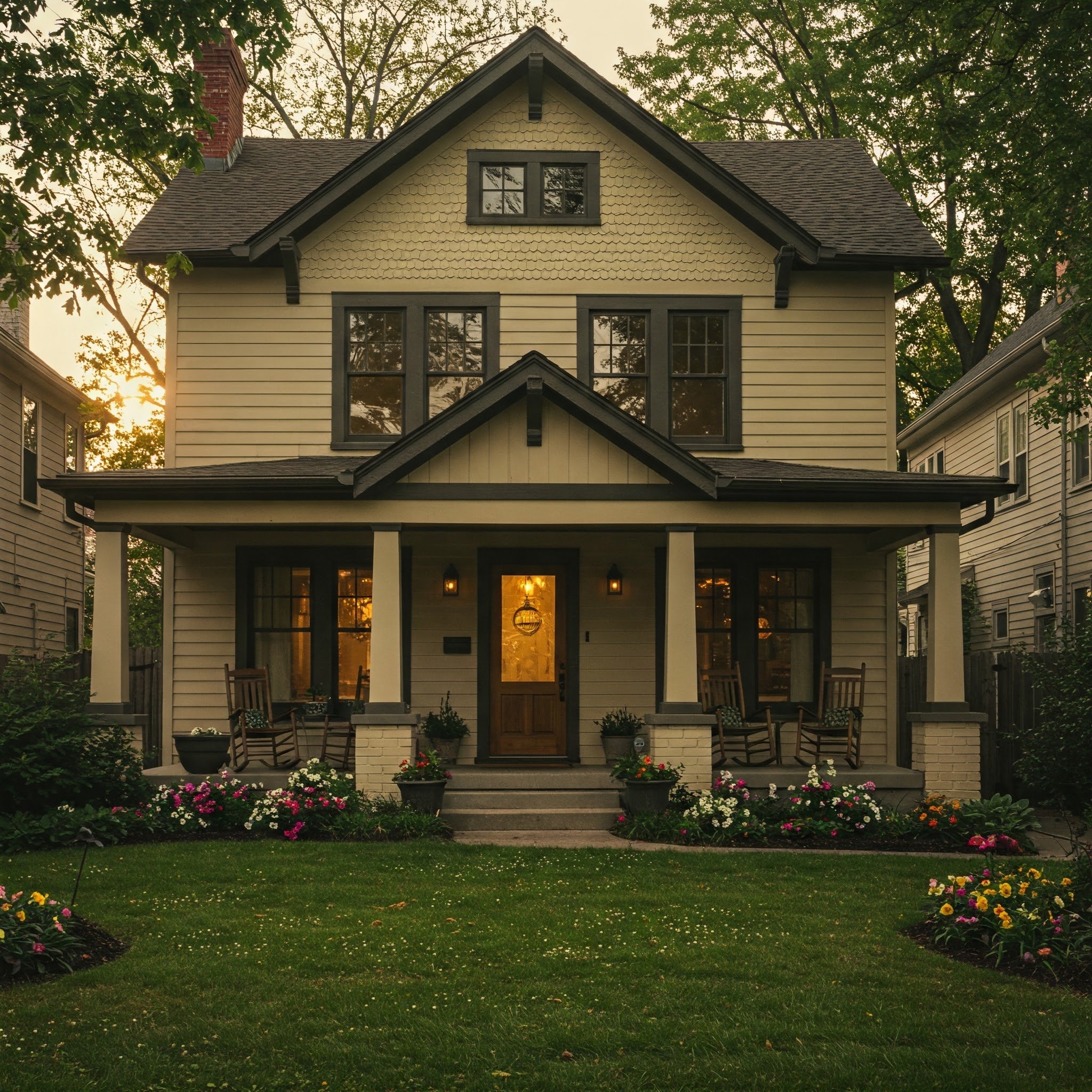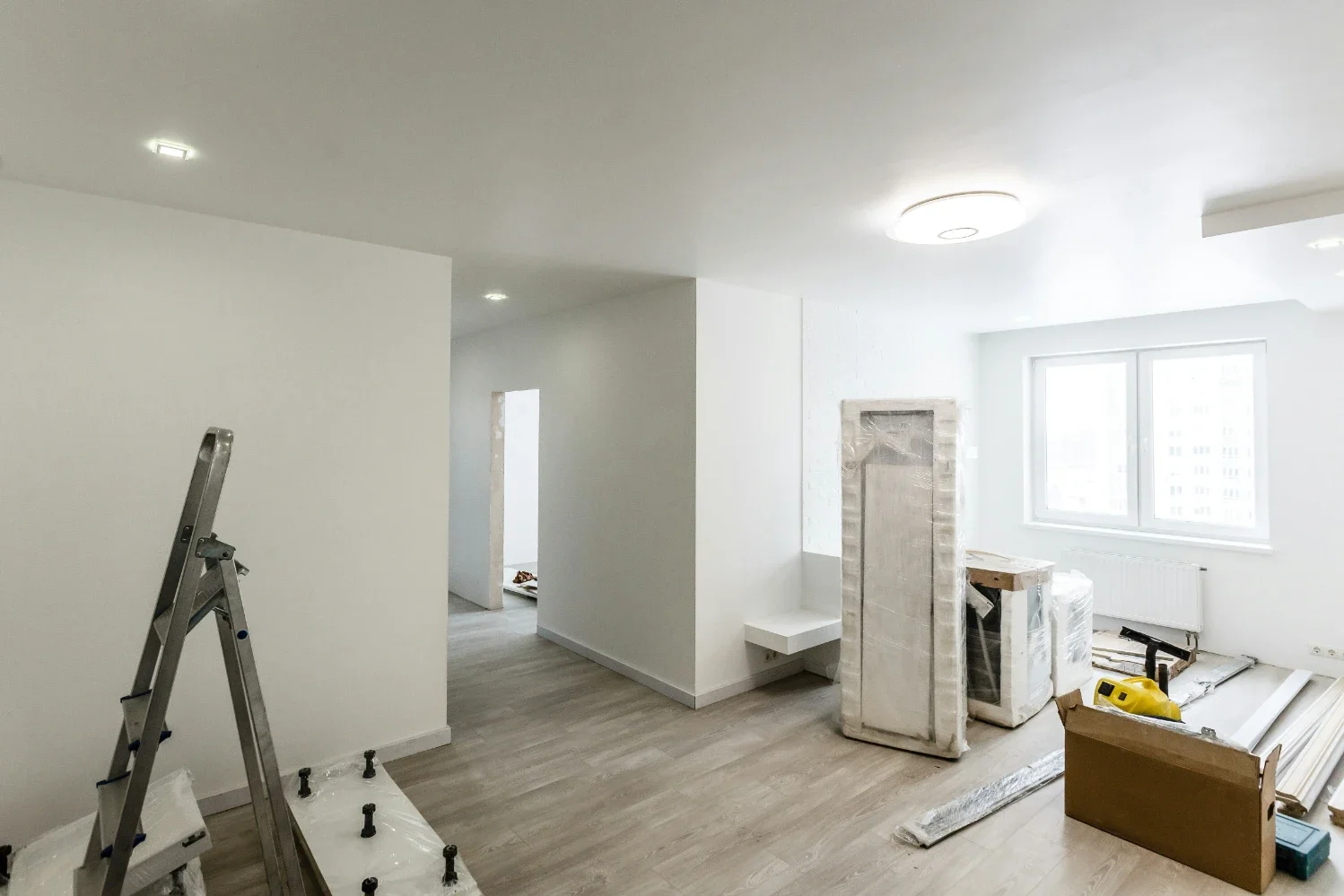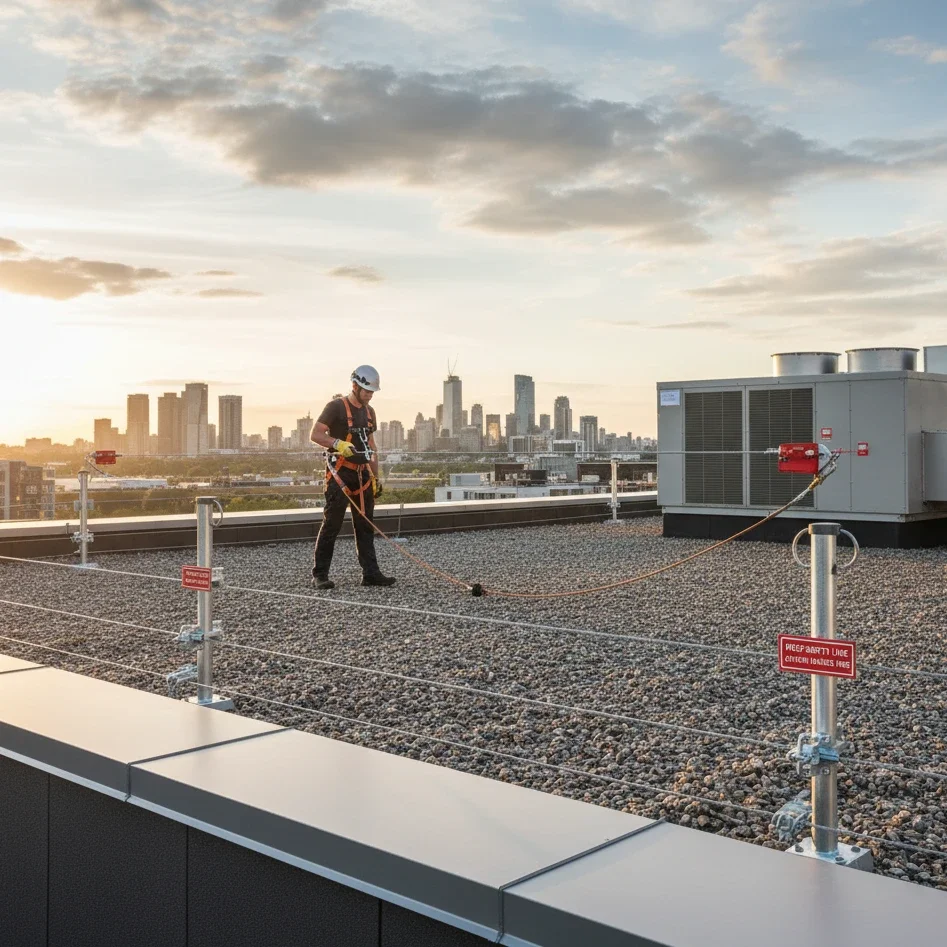How Much Does It Cost To Build A House?
Curious about “How Much Does It Cost To Build A House?” In this in-depth guide, we’ll explore the major expenses, hidden fees, and insider tips to help you confidently build your dream home without breaking the bank.
Wow, so you’re actually thinking of building a house—talk about an exciting journey! There’s nothing quite like living in a place that’s designed around your lifestyle, taste, and quirky preferences. But hold your horses, because before you start hammering nails into 2x4s, it’s crucial to answer the million-dollar question (pun intended): How Much Does It Cost To Build A House?
For many people, building a home from scratch feels like walking a tightrope without a safety net. You’ve got land acquisition, architectural designs, foundation work, roofing materials, labor costs—phew, that’s a lot to juggle. Plus, the last thing you want is to sink your life savings into a project that might drag on or, worse, end up half-finished. Yet don’t let that scare you off; with a little planning and a lot of elbow grease, you can build a home that suits your needs and still stay on budget.
Let’s dig into all the nitty-gritty details—yes, even the less glamorous aspects—so you’ll walk away with a full grasp of what it really takes, financially, to build a house. We’ll chew the fat on everything from land prices to finishing touches, peppered with some helpful bullet points, so that by the end, you’ll practically be an authority on the subject.
How Much Does It Cost To Build A House? The Big Picture
If you’ve found yourself asking, “How Much Does It Cost To Build A House?” you’re not alone. This question pops up in Google searches more often than you’d imagine. You might see estimates ranging from $100 to $200 (or more) per square foot, depending on your location, design choices, and materials. But it’s also not unusual for costs to skyrocket beyond that if you’ve got luxury finishes or are building in high-end neighborhoods.
To keep it real, constructing a modest-sized home in a cost-effective area could run you somewhere in the ballpark of $200,000 to $350,000. On the other hand, if you’re aiming for a swanky pad in a prime spot, you might be looking at upwards of $500,000. The spectrum is wide, so let’s peel back the layers to see what’s truly driving these costs.
Location, Location, Location
Ever heard the phrase “location is everything?” Well, in the world of home building, that isn’t just a cliché—it’s practically gospel. The price of land fluctuates tremendously. If you’re set on an upscale city neighborhood, brace yourself for sky-high land costs. Meanwhile, smaller towns or rural areas might be more wallet-friendly but come with their own trade-offs, like a limited labor force.
Urban vs. Rural
Urban Areas: You’ll have access to a variety of professionals, but the land could be exorbitantly priced.
Rural Areas: Land is cheaper, and there may be fewer zoning restrictions, but you might have to transport materials a longer distance, driving up shipping and logistics costs.
If you have to guess, imagine trying to build on a remote mountain slope or a coastal zone with strict building codes. You’ll likely pay more just for specialized engineering. In fact, you might want to have a contingency fund just for the unexpected surprises location can throw at you, such as unique foundation requirements or the need for an off-the-grid power system.
Digging Deeper: Major Cost Components
Building a house isn’t a one-and-done deal. Instead, think of it as a puzzle with multiple pieces—land, design, permits, foundation, framing, roofing, interiors, and so on. Let’s slice it up into digestible portions.
1. Land Acquisition
This is your starting point. As mentioned, land prices vary immensely depending on region, proximity to urban centers, and even the desirability of the surrounding community. Sometimes, you’ll snag a sweet deal on a plot, but it might be sloping or rocky, which can jack up your site prep costs.
2. Site Preparation
Before you can even lay that first brick, you might need to clear away trees, rocks, or other debris. You may have to level the ground or deal with tricky soil. If you’re building near a swampy area or on a steep incline, guess what? Costs go up because you’ll likely need specialized construction techniques to secure the foundation.
3. Design and Planning
Hiring an architect or architectural designer is essential for ensuring your house complies with local codes and suits your personal style. On average, architects can charge anywhere from 5% to 15% of the total construction cost. Don’t forget engineering fees if you need structural, electrical, or mechanical plans.
4. Permits and Inspection Fees
Ah, bureaucracy. Nobody’s favorite topic, but oh-so-important to budget for. The cost for permits can range from a few hundred to several thousand dollars, influenced by jurisdiction, size of the house, and even how quickly you want them processed. Then add inspection fees, which can pop up at various stages of construction—foundation, framing, final occupancy, you name it.
5. Foundation Work
A solid foundation is like the backbone of your entire house. Depending on soil type and house design, you might opt for a slab-on-grade, crawlspace, or full basement. Each carries its own price tag, with more elaborate foundations costing significantly more.
6. Framing and Exterior Construction
Once the foundation is set, it’s time for framing—think walls, roof structures, and general skeletal work. This phase can easily be one of the costliest, especially when lumber prices fluctuate. After that, you’ll add exterior elements such as siding or brickwork, along with windows and doors.
7. Major Systems (Plumbing, Electrical, HVAC)
Here’s where the project really starts eating into your budget. Plumbing, electrical wiring, and HVAC systems must be installed properly to avoid future headaches. Labor in these specialized trades can be pricey, but skimping here can spell disaster.
8. Interior Finishes
From flooring and cabinetry to paint and trim, interior finishes can vary widely in cost. If you want marble countertops, high-end hardwood floors, and custom cabinets, be prepared to pony up. On the flip side, there are numerous budget-friendly alternatives if you’re willing to compromise on brand names or luxury materials.
9. Landscaping and Exterior Amenities
Your construction budget doesn’t end at the front door. Driveways, sidewalks, fencing, and landscaping can add several thousand dollars to your final tally. Want an in-ground pool or a fancy outdoor kitchen? Cha-ching.
10. Contingency Fund
Some pros recommend adding a 10% to 20% buffer to your overall budget. Why? Because life happens—maybe you discover mold in the soil, or you decide you absolutely must have that upscale clawfoot tub. Either way, a contingency fund is your safety net.
Financing Options: Picking the Right Path
You’ve got the vision, now how do you foot the bill? There’s more than one way to finance home construction. Banks offer construction loans that convert into conventional mortgages once the house is completed. You can also explore personal loans, home equity loans (if you already own property), or good old-fashioned crowdfunding—though that last one is a long shot unless you’ve got generous pals.
Construction-to-Permanent Loans: You close once, and after building is done, the loan switches to a standard mortgage.
Stand-Alone Construction Loans: You get a loan for building, then refinance or get a new mortgage once the house is complete.
Owner-Builder Loans: If you’ve got construction skills and plan to be your own general contractor, some lenders cater specifically to that scenario.
Just remember, lenders typically require detailed building plans, a thorough budget, and sometimes an appraisal before they approve your loan. And be sure to factor in closing costs—those little fees can be more than a drop in the bucket!
Common Pitfalls and How to Dodge Them
Underestimating the Budget
It’s super easy to create a budget that only includes best-case scenarios. But the real world doesn’t always cooperate.
Tip: Add at least a 10% contingency in your budget.
Failing to Vet Contractors
Don’t settle for the first contractor who comes along. Ask for references and examples of completed projects.
Tip: Make sure they’re fully insured and licensed.
Ignoring the Importance of Inspections
Skipping or rushing inspections might lead to hidden flaws that crop up years later.
Tip: Schedule inspections at multiple stages of the build for peace of mind.
Poor Communication
Misunderstandings between you, your contractor, or subcontractors can lead to costly delays.
Tip: Keep lines of communication open with regular check-ins and clear documentation.
Over-Customization
Personalizing every inch of your home is tempting, but custom features can escalate costs quickly.
Tip: Focus on customizing areas that matter most to you, like the kitchen or master suite, and stay standard elsewhere.
Quick Reference: Cost Breakdown
For a more visual snapshot, here’s a rough percentage breakdown you can keep in your back pocket:
Land + Site Prep: ~15-20%
Foundation: ~10%
Framing: ~15%
Exterior Finishes (Siding, Roofing, Windows): ~15%
Major Systems (Plumbing, Electrical, HVAC): ~10-15%
Interior Finishes (Flooring, Cabinets, Paint): ~20-25%
Miscellaneous (Permits, Inspections, Landscaping): ~5-10%
Of course, these percentages can and will shift based on region, material choices, and design complexities. But it gives you a ballpark to work from.
The Burning Question: How Much Does It Cost To Build A House?
Alright, let’s circle back. You’ve probably heard that it’s anywhere between $100 and $200 per square foot. Is that set in stone? Heck no. That’s just a starting point. So if you’re building a 2,000-square-foot home, you might be looking at $200,000 to $400,000 right off the bat. But if your new place is decked out with premium materials—think top-of-the-line appliances, marble floors, handcrafted mahogany doors—those costs can climb quicker than a squirrel up a tree.
Then again, there are frugal builders who manage to keep costs on the low end by recycling materials, DIY-ing certain parts, or hunting for sales on lumber. The real answer to “How Much Does It Cost To Build A House?” will vary from one person to the next, influenced by preferences, location, and sometimes just plain luck.
Smart Ways to Reduce Home-Building Costs
Who doesn’t love saving a buck or two? If you’re keen on cutting costs, you might consider these strategies:
Simplify the Floor Plan
Complex designs with numerous corners and angles add costs in both materials and labor.
Consider a more boxy shape to minimize framing expenses.
Opt for Standard Materials
Custom-sized windows and exotic woods are gorgeous but come at a premium.
Standardized materials are often cheaper and easier to source.
Invest in Energy Efficiency
Energy-efficient windows, insulation, and appliances might cost more upfront but can slash your utility bills in the long run.
Mix and Match Finishes
Splurge in rooms that you’ll use and see every day, like the kitchen or living room, but use more affordable finishes elsewhere.
Do Some Work Yourself
If you’re handy with a paintbrush or a hammer, consider taking on simpler tasks to save on labor.
Just don’t bite off more than you can chew.
Shop Around for Contractors
Get multiple bids to ensure you’re getting a fair price.
Cheaper isn’t always better, but knowledge is power.
Plan for the Future
Build a layout that easily accommodates possible expansions or renovations. This forward-thinking approach can save big bucks down the road.
Conclusion
So there you have it—the ins and outs of How Much Does It Cost To Build A House? We’ve explored everything from land acquisition to choosing marble countertops, plus financing routes and tips to dodge common stumbling blocks. Building your own place isn’t a simple walk in the park, but the payoff is huge: a home tailored to your tastes, daily habits, and future dreams.
Sure, it might feel like you’re juggling a thousand flaming torches, trying to keep costs in check and meet construction deadlines. But with a well-structured plan, a realistic budget, and a healthy dose of patience, you can create a space that truly reflects who you are. It’s a monumental endeavor—like running a marathon—but crossing the finish line with keys in hand is oh-so-rewarding.
By now, you’ve got the skinny on all the major factors that determine the price tag of building a new home. Whether you end up in a trendy prefab on the outskirts of town or a stately two-story colonial in a well-established suburb, remember that preparation and research are your best friends. So as you move forward, keep one eye on the numbers and the other on your ultimate vision. With persistence and a little luck, you’ll soon be turning that door handle to your brand-new, custom-built slice of heaven.
Read next: What Is the Penalty for Building Without a Permit?
Frequently Asked Questions
1. Can I really build a house for under $200,000?
You bet—if you’re building in a region with lower land costs and if you keep your design and finishes modest. But do factor in the possibility of cost overruns. A smaller footprint, standard materials, and minimal frills can help keep you well under that amount.
2. Should I hire a general contractor or be an owner-builder?
That depends. If you’re comfortable managing multiple subcontractors, scheduling inspections, and juggling the finances, go for it. Owner-building can save money, but it’s a ton of responsibility. If you’d rather let someone else oversee the nitty-gritty, a seasoned general contractor might be worth the extra cost.
3. What about modular or prefabricated homes?
Modular and prefab homes can sometimes shave off a chunk of the cost, as they’re built in a controlled factory setting, reducing labor and material waste. However, you’ll still need to pay for land, foundation, and site prep, so it’s not always a cut-and-dried cheaper solution.
4. Is it cheaper to build a two-story house than a one-story?
Often, yes. With a two-story home, you can maximize your square footage by building upward instead of outward. That typically means using fewer foundation and roofing materials for the same amount of living space.
5. Do I need a real estate agent when I’m just building on raw land?
A real estate agent familiar with land purchases can be extremely helpful. They’ll know the zoning laws, local regulations, and can guide you to suitable parcels that fit your construction vision. Plus, they can help you avoid any hidden pitfalls like environmental restrictions or easements.
